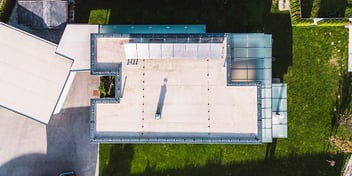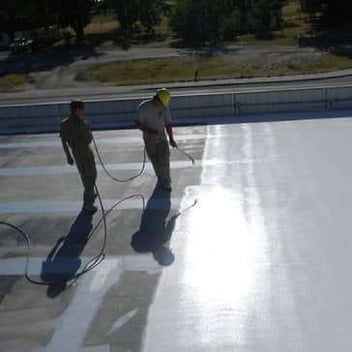- Home »
- Learningcenter »
- Best type of commercial roof
What Is the Best Type of Commercial Roof?
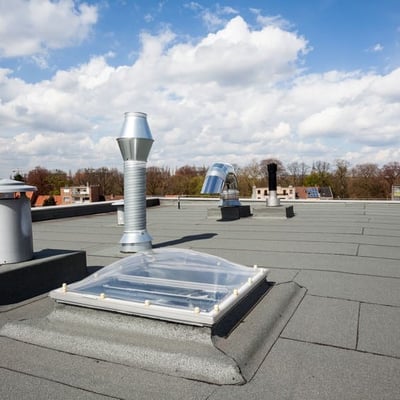
Commercial roofing options flood the market which makes it a difficult decision to choose the best one most suited for your needs. It is essential that you do your research on available types of commercial roofs and compare prices, makes and materials, and suitability.
Seeking the expert advice of an experienced contractor who specializes in commercial roofing may also be a good idea. They have extensive experience working with varied commercial roof materials in different scenarios. They are an endless resource of information and may provide good insights and valuable insider information.

What Is a Commercial Roof?
Commercial roofing systems are not too different from residential roofing in terms of function. Both are obviously used to protect property, but the former tends to focus more on purpose and function, while the latter does consider function but puts importance on design as well.
While residential roofing tends to incorporate aesthetics in its design and form, commercial roofing does not consider this anymore since it is too high up from the ground to be seen and aesthetically appreciated. Commercial roofing tends to be flatter than residential roofing. There is not much slope on commercial roofing other than the required angle to allow for drainage to prevent the pooling of water.
Commercial roofing — because of its sheer size and coverage — greatly impacts the structural integrity of a building. They extend over a large area and apply a great deal of pressure on the structure. It is imperative that this be considered in designing a building and in choosing the best commercial roof material.
There are three important factors to consider about commercial roofing.
Installation
The installation of commercial roofs typically takes several weeks depending on the complexity of the materials and the roof’s surface size. This requires the services of a professional contractor who has specialized tools and safety equipment.
Inspection
Checking problem areas that may potentially cause damage to commercial roofs is critical. Inspecting downspouts, drainage pipes, gutters, and vents regularly may help avoid major problems that can become very expensive to repair.
Preservation and Maintenance
Doing preservation checks and timely maintenance repairs will definitely add to the years of a commercial roof. If regular cleaning is done, and you are mindful of minor repairs of leaks and water damage, the life of the commercial roof will be extended.
This article will give you a comprehensive run-through on the different commercial roof materials and help you make the best choice for your building construction needs.
What Are the Different Types of Commercial Roofing Systems?
There are several common commercial roofing materials that are available in the market. Each has its own merits, suitability, and purpose.
Metal Roofing
Metal roofing is one of the most durable systems with its lifespan set from 40 to 60 years. It comes in different materials such as copper, aluminum, coated steel, tile sheets, zinc, tin, and corrugated galvanized steel.
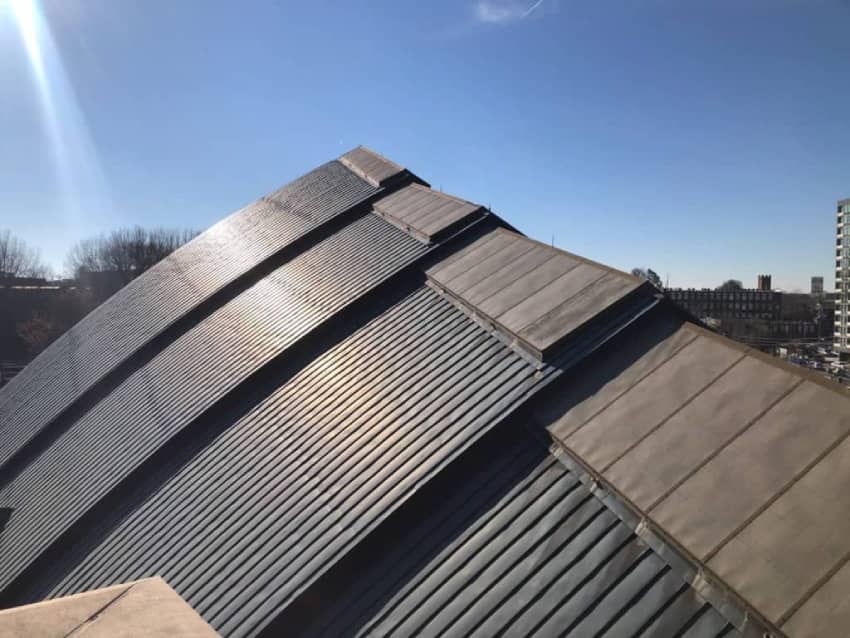
EPDM (Ethylene Propylene Diene Monomer)
Ethylene propylene diene monomer is the fancy name for rubber roofing. Also known as thermoset roofing, it comes in either white or black rolls.
TPO (Thermoplastic Polyolefin)
Thermoplastic polyolefin is a single-ply roofing membrane made of synthetic material used to cover flat roofs.
PVC (Polyvinyl Chloride)
PVC or polyvinyl chloride is a lightweight material composed of two layers of PVC and stuffed with polyester in between for reinforcement. This has been chemically treated to be UV stable and resistant to heat, bacteria, fats, and oil. This is the best kind of material to use for hotels and restaurants that give off smoke and oils from cooking.
SPF (Spray Polyurethane Foam)
The spray polyurethane foam is a work of magical science as it is plastic formed from a foam that is sprayed over an existing roof, turning solid in just a few seconds. It also expands to 30 times its size as it dries. SPF is not very popular even though it has been around since the 1960s, but it is an eco-friendly alternative.
Asphalt Rolls
Asphalt roll roofing or membrane is used for low sloped roofs and is made of an organic felt mat that has been laced with asphalt and granular stone aggregates.
Acrylic Coatings
Acrylic coatings are a roofing system that makes use of multiple layers or coats of primer, base coat, fabric, another primer on the fabric, and a final topcoat. This system is the preferred roofing system for replacements most of the time, either on repair seams or full replacements.
Shingle Roofing
Shingles are mostly used in residential roofing but may be used on commercial roofing that has steep, high-angled slopes. They are flat, rectangular composites, asphalt, or other roofing materials that are applied from the base of the roof and overlapped to provide coverage.
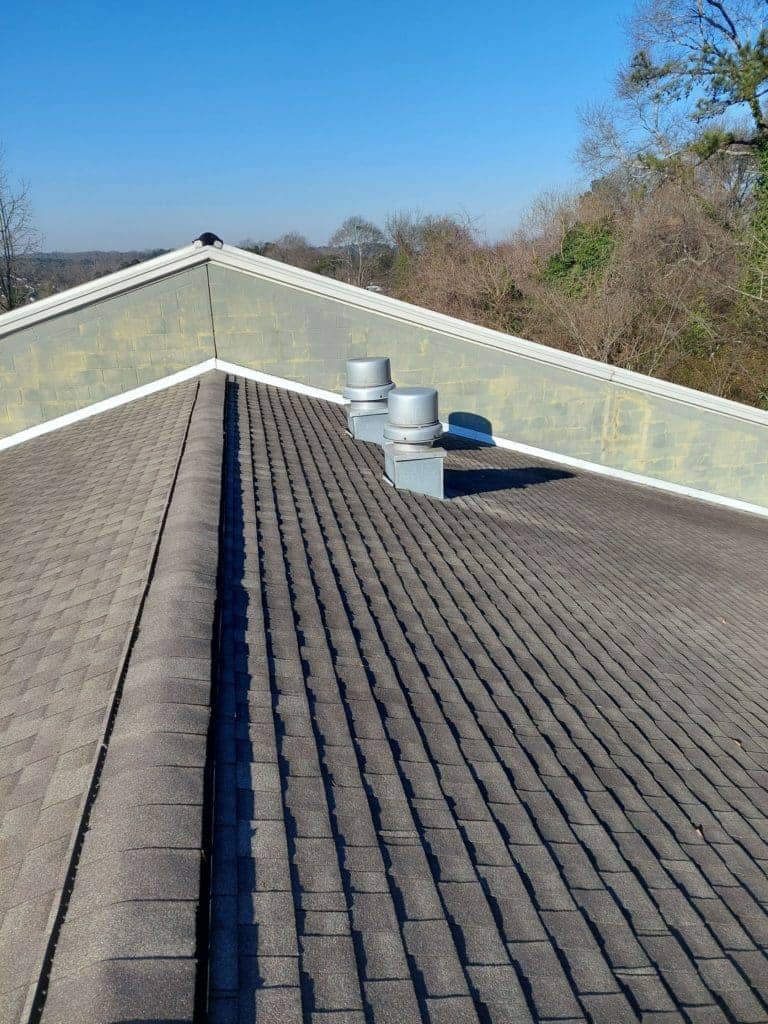
What Are the Advantages of Each Type of Commercial Roof?
Consider the benefits of using each type of commercial roof and compare against your requirements, your environmental conditions, and your budget.
Metal Roofing
Metal roofing is fire resistant and more durable than most other materials in the market. It also gives off an aesthetically appealing finish.
EPDM
This rubber roofing system is very inexpensive and easy to install. It is durable, doesn’t scratch easily, and is lightweight. The black roll absorbs heat and is UV resistant.
TPO
Thermoplastic polyolefin is similar to a PVC which is lightweight and can be installed in varied ways. It is low maintenance in that it doesn't need to be pressure washed, doesn’t break down easily, and deters the growth of algae and bacteria.
PVC
PVC roofing is known for its durability and long lifespan. It is resistant to heat and can withstand strong winds. It also deflects moisture hence does not promote bacteria growth. The way it is installed using heat welding creates a tight seam that holds it together.
SPF
This is a fantastic product that can last for nearly five decades with the correct installation and proper maintenance. It can be waterproof and provide added insulation, serve as a perfect multi-layer SPF system, and has a reflective topcoat that translates to energy savings due to decreased heat and air conditioning needs. Since it is applied as a foam, it can easily coat and curb around protruding structures.
Asphalt Rolls
Asphalt rolls are very inexpensive and easy to install.
Acrylic Coatings
Acrylic coatings are UV resistant and reflective, hence can be energy efficient. It is easy to use and maintain because you just need caulk to repair it. Adding a top coat revitalizes it and makes it good for another ten years.
Shingle Roofing
They are easy to install, very affordable, and flexible in its function and application.
What Are the Disadvantages of Each Type of Commercial Roof?
While each benefit is worth mentioning, you must weigh against the disadvantages as well in order to zero in on the best option for you.
Metal Roofing
Metal is prone to rust and corrosion. Coating it with protective layers will be an added cost.
EPDM
This type does not add to your roof’s aesthetic as it looks like the inner tubing of a tire. It can also puncture easily with heavy debris, hail, or constant trampling of people.
TPO
Due to its popularity, many manufacturers have ventured into producing it at different levels of quality. They come in varying thicknesses and small panel widths which means more seams to join and more problem areas to watch out for.
PVC
PVC comes out more expensive than some other materials. The same welding technique of installation that tightly seals it in a seam works to its disadvantage as well when it comes to repairing since the material does not react well with old roofing. It is also prone to shrinking when exposed to extreme heat, and old PVC roofs have been known to shatter in cold weather.
SPF
The installation for this product is reserved for good weather since it is a chemical that should not react with other substances. You cannot install the product in weather conditions that are less than perfect. It is also subject to mastery of installations since it takes expert knowledge to calibrate and use the spray. Once formed, it can be expensive to remove should there be a need to do so.
Asphalt Rolls
They do not last long, with lifespans of about ten years. They are rolled out, and the seams are connected together; these seams pose as problem areas later on. This type requires a lot of maintenance and is not energy efficient.
Acrylic Coatings
Over time, acrylic coatings are prone to losing thickness. They also need to be applied during hot, sunny, and dry weather. They are not as effective on flat roofs and cannot handle ponding water well.
Shingle Roofing
Shingles are prone to mildew and mold — especially if your building is not in a sunny, open area. Some brands are also less durable than others and do not last as long as the other materials.
What Is the Best Commercial Flat Roofing Material?
The best type of material for flat roofing systems depends on your situation. Built-up roofing is common, which is a continuous membrane of felt or fabric alternating with asphalt-type materials. This is common because it is easy for roof repairs.
PVC and TPO are both good, as they are often white and offer high chemical resistance.
EPDM roofing is a common material, as it is a single-ply membrane and is cost effective. It is, however, black like rubber and can absorb heat.
In a different twist, some people have turned to garden or green roofing on a flat roof. If this type of roofing interests you, talk to us today and we can work out the best way to put greenery on your roof without leaks or weakness.
How Much Does It Cost To Replace a Commercial Roof?
One of the biggest factors to consider in choosing the best commercial roof material is cost. After weighing the advantages and disadvantages, the cost for each should be evaluated. Consider the product’s estimated useful life (EUL) and compare and evaluate against the upfront value or cost of installation. Select the best value for money commercial roof material for your building.
The least inexpensive roofing material runs at a cost of $3.50 to $7 per square foot, depending on the material. Single-ply flat roof replacements may range from $11 to $ 14 per square foot, and the most expensive structure is metal roofing at $7 to $15 per square foot.
Making Your Decision
Choosing the best type of commercial roof for your building is a highly critical decision to make. It is true that it is best that you consult experts, but the final decision still lies on you. Making an impulsive choice could mean years and years of expensive repairs.
No single factor can be used as a lone measure for the perfect roofing system for you. It is important that you weigh all possible considerations.
Existing Conditions
In choosing what will work best for you, you first need to take stock of the building’s location, the extreme weather expected for the climate it is set at, and hazards like wildlife and foliage near the building. A metal roof may work best for areas where heavy snow and hail are expected in the colder months, while EPDM may be best for buildings that see both extreme cold and extreme heat.
Longevity
Commercial roof types will vary greatly in their lifespan based on many factors like how it was installed, how it is maintained, and the weather conditions it is exposed to. You need to assess your building plans and for how long you intend to stay there in order to help you decide which material will suit your needs. There are roofing systems that are pricey but may last for over five decades, and there are those that promise prime condition for a decade.
Finances
Budget is a major factor in your decision making, and roofing is a huge investment that you must put a lot of thought into. There are low-cost roofing materials such as rubber that are durable enough, and there are those that are of prime quality and use high-end materials that last longer but cost more. If you weigh the benefits and costs of each material type and evaluate value for money, you can get a better idea of which roofing material to go for.
Conclusion
Roofing is an essential part of any building, and it requires much planning and selection to get your money’s worth out of its estimated useful life. A lot of assessment and evaluation — considering multiple factors — should go into its selection. It is best to consult with roofing experts to get the best options, so you can ensure that your roof will be safe, durable, and will have an optimum useful life.
 Call (678) 365-3138
Call (678) 365-3138
